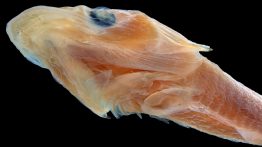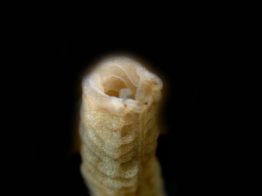Researchers from the University of Washington, Chapman University and University of Guelph have published new research showing how hagfishes — an ancient group of eel-like animals found at the bottom of the ocean — survive an initial attack from predators before they release large volumes of slime to defend themselves. Results show that hagfish skin is not puncture resistant; instead, it is both unattached and flaccid, which helps avoid internal damage from penetrating teeth.
Read more at UW Today »Megan Dethier
Read more »
New many-toothed clingfish discovered with help of digital scans
Researchers from UW and other institutions named the newly discovered species the "duckbilled clingfish" for its broad, flat snout — not unlike the bill of a duck.
Read more at UW Today »Our closest worm kin regrow body parts, raising hopes of regeneration in humans
What if humans could regrow an amputated arm or leg, or completely restore nervous system function after a spinal cord injury? A new study of one of our closest invertebrate relatives, the acorn worm, reveals that this feat might one day be possible. Acorn worms burrow in the sand around coral reefs, but their ancestral relationship to chordates means they have a genetic makeup and body plan surprisingly similar to ours.
Read more at UW Today »How do shark teeth bite? Reciprocating saw, glue provide answers
Researchers, including Aquatic and Fishery Sciences' Adam Summers, seek to understand why shark teeth are shaped differently and the biological advantages of their various shapes.
Read more at UW Today »




